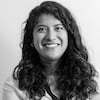The Day of the Dead: The not-so-pre-Hispanic origins of the Mexican tradition
It is believed that the dead emerge from the underworld to spend time with their loved ones


The Day of the Dead is a very special event in Mexico. The traditional crafty papel picado, Aztec marigolds, chocolate and sugar skulls, pan de muerto, water, salt, candles and all the ancestors’ favorite foods fill the homes of modern-day Mexicans and public spaces with the sole purpose of inviting them back from the dead.
According to Mexican custom, dead children are remembered on November 1 and adults on November 2. In some regions, those who died by accident or in tragic circumstances are remembered on October 28, while on October 30, it’s the turn of the souls of those in limbo who died without being baptized.
On November 7, 2003, the United Nations Educational, Scientific and Cultural Organization (UNESCO) declared the Day of the Dead in Mexican indigenous communities an Oral and Intangible Heritage of Humanity, although many consider that the pre-Hispanic past has had too much influence on the day’s traditions; in reality this celebration is an example of the latent syncretism between Hispanic and pre-Hispanic culture.
The Origin of All Saints’ Day and All Souls’ Day
November 1 is also known as All Saints’ Day and November 2 as All Souls’ Day. According to historian Elsa Malvido, the celebration of All Saints’ Day was promoted by the abbot of Cluny in France in the 11th century in order to commemorate the Maccabees – Jewish rebel warriors. Later, the Roman Catholic Church adopted the date.
The celebration consisted of churches and convents exhibiting relics, remains and treasures to which believers offered prayers to obtain forgiveness and avoid going to hell.
In places such as the Spanish regions of Castile, Aragón and León, food was prepared in the shape of bones, skulls and skeletons and these were taken to the church where a saint was worshiped. Later, the image of the offering was placed in homes and the so-called table of the saint was decorated with sweets and bread. The aim of the offerings was to sanctify the home. The faithful would make long pilgrimages to sacred areas as part of this ritual.
All Souls’ Day, meanwhile, was dedicated to the souls that were in purgatory and could only escape it with the prayers of the faithful. Thus, November 1 and 2 became the ideal dates to ask for forgiveness and pray in order to help not only oneself but also the deceased. This tradition came to America with the Spanish conquerors; in order to carry out the exhibition of holy objects, they had to move them from Rome to the port of Veracruz.
The pre-Hispanic origin of the Day of the Dead
According to Diego Durán, there are two indigenous Nahua rituals dedicated to the dead: Miccailhuitontli or the Small Fiesta of the Dead, that takes place in the ninth month, which would be August in the Gregorian calendar, and the Big Fiesta of the Dead, celebrated the following month.
The indigenous people conceived life and death as a dialectical concept. According to Bernardino de Sahagún, the ancient tribes believed that when they died they did not perish, but began to live again. Death was simply part of a constant cycle.
They conceived of sowing their crops in the same way: a cycle in which they had to harvest the fruits in order to sow again. They feared that during the intervening months while waiting to harvest, the crops might die as it was a period of transition between drought and abundance. In order to continue the cycle, the harvest was shared with the dead – their ancestors. It was a ritual of life and death in which they presented sacrifices and offerings (usually cocoa, money, wax, birds, fruits) so that the crops would grow again.
According to sociologist and anthropologist, José Eric Mendoza Luján, during the years of the Spanish conquest, the dates were changed so that they would appear to celebrate Christian traditions, but still more than 40 indigenous groups, numbering more than six million people, hold rituals associated with this celebration, according to data from the Mexican Ministry of Culture.
Celebrating in cemeteries
According to historian Elsa Malvido, after the cholera pandemic in 1833, corpses had to be buried in open spaces so that the dead would not infect the living. And so cemeteries were born.
Meanwhile, the duality and syncretism of the indigenous and Catholic traditions transformed the idea of worshiping relics into worshiping ancestors. The cemeteries became sites of ritual and the tombs became the new relics during All Saints’ Day.
Pilgrims, hungry from their long walk, would arrive amidst the relics, offerings and flowers on the tombstones and satisfy their hunger in the presence of their dead.
Carrying much more weight in central and southern Mexico, the Day of the Dead is a deep-seated tradition, as well as being a social event that revolves around the living communing with the dead.
Tu suscripción se está usando en otro dispositivo
¿Quieres añadir otro usuario a tu suscripción?
Si continúas leyendo en este dispositivo, no se podrá leer en el otro.
FlechaTu suscripción se está usando en otro dispositivo y solo puedes acceder a EL PAÍS desde un dispositivo a la vez.
Si quieres compartir tu cuenta, cambia tu suscripción a la modalidad Premium, así podrás añadir otro usuario. Cada uno accederá con su propia cuenta de email, lo que os permitirá personalizar vuestra experiencia en EL PAÍS.
¿Tienes una suscripción de empresa? Accede aquí para contratar más cuentas.
En el caso de no saber quién está usando tu cuenta, te recomendamos cambiar tu contraseña aquí.
Si decides continuar compartiendo tu cuenta, este mensaje se mostrará en tu dispositivo y en el de la otra persona que está usando tu cuenta de forma indefinida, afectando a tu experiencia de lectura. Puedes consultar aquí los términos y condiciones de la suscripción digital.
More information
Archived In
Últimas noticias
Welcome to the post-religion era: The idea of Christianity as the absolute truth has become obsolete
‘I thought you would like it’: The risky sexual practice popularized by TV shows and TikTok
The digitalization of tourism: ‘They promise experiences and gave us the worst possible one’
Mexican peso defies uncertainty with forecasts of a new period of stability in 2026
Most viewed
- Sinaloa Cartel war is taking its toll on Los Chapitos
- Oona Chaplin: ‘I told James Cameron that I was living in a treehouse and starting a permaculture project with a friend’
- Reinhard Genzel, Nobel laureate in physics: ‘One-minute videos will never give you the truth’
- Why the price of coffee has skyrocketed: from Brazilian plantations to specialty coffee houses
- Silver prices are going crazy: This is what’s fueling the rally










































